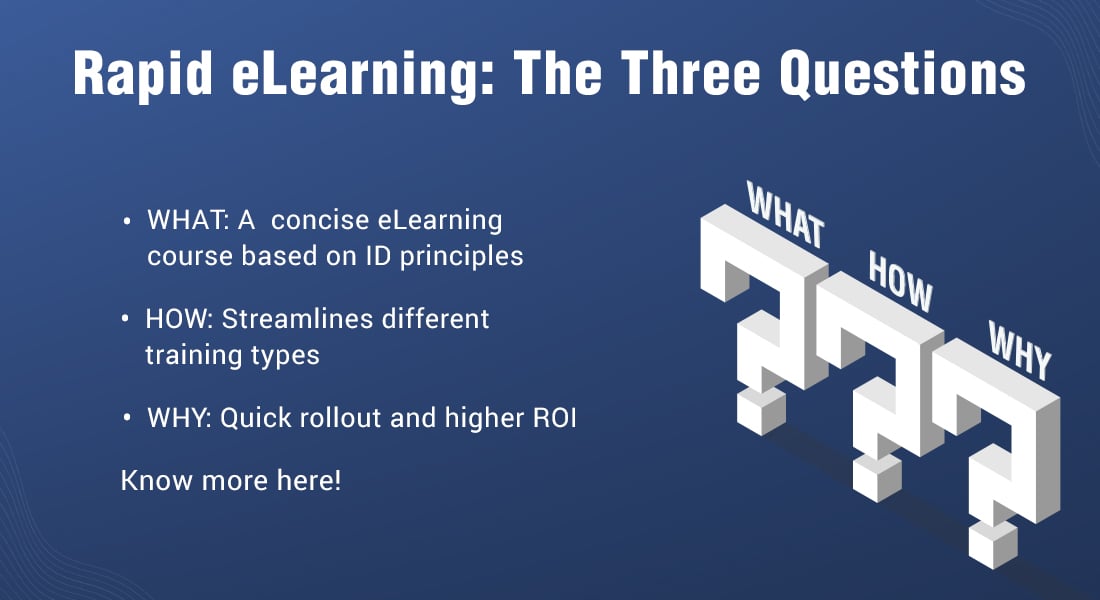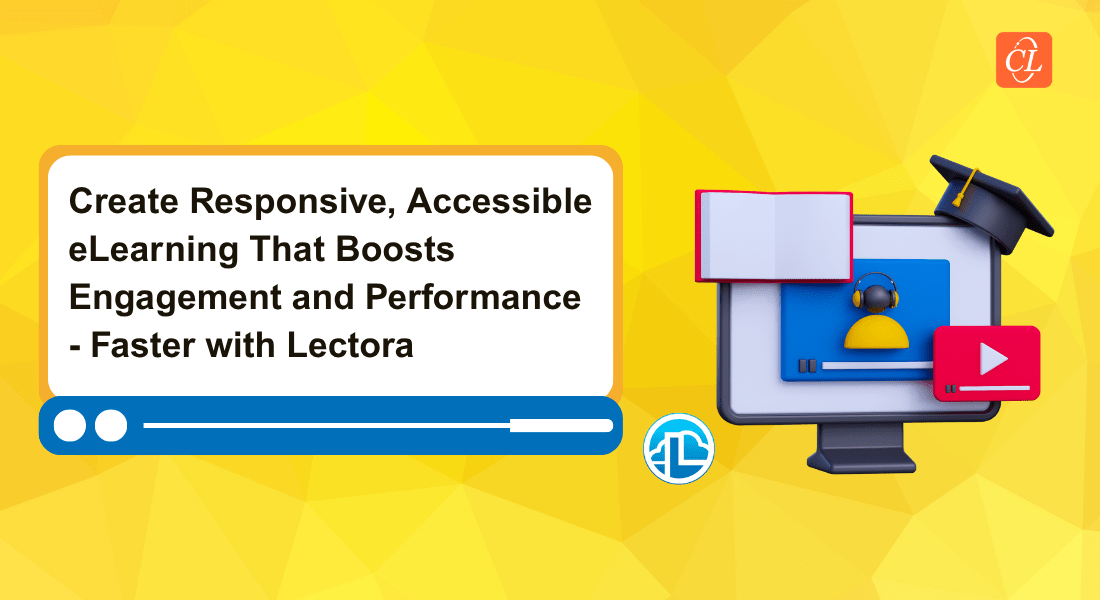In today’s global workplace, the barriers of time zones, rigid schedules, and geographical distances no longer need to limit learning. Imagine a training environment where employees access content when it’s most relevant to them—whether during a morning commute, between meetings, or late at night—without being tied to a physical classroom or live session. This is the promise of asynchronous learning—a learner-centric approach that adapts to employees’ schedules and work rhythms, rather than the other way around. By enabling self-paced, anytime, anywhere access, it empowers organizations to scale training, personalize the learning journey, and sustain knowledge retention over time.
How L&D And Business Can Align to Conquer The Future Of Work
In this post, you’ll uncover what asynchronous learning is, how it differs from traditional models, and why it’s a game-changer for corporate training. You’ll learn proven best practices for driving effectiveness in self-paced environments, explore five powerful online tools to enhance delivery, and get practical tips to boost adoption and engagement across your organization. Whether you’re an L&D leader, instructional designer, or training manager, this resource is your blueprint for maximizing impact with asynchronous learning.
Table of Contents
- What is Asynchronous Learning?
- Why Choose Asynchronous Learning for Your Training Initiatives?
- What Are the Golden Rules for Training Effectiveness in Asynchronous Learning?
- What Are the Best Online Tools to Optimize Asynchronous Learning Delivery?
- How to Promote Asynchronous Learning Programs in Your Organization?
What is Asynchronous Learning?
In asynchronous learning, learners leverage digital platforms and tools to engage with training content independently, without a live facilitator. This approach shifts the focus from scheduled, instructor-led sessions to a self-directed learning experience.
Unlike traditional instructor-led training (ILT) or other synchronous formats, asynchronous learning empowers employees to learn anytime, anywhere, at their own pace—perfect for global teams and busy professionals. Examples include self-paced eLearning courses hosted on an LMS, microlearning modules, scenario-based simulations, podcasts, and interactive videos.

Why Choose Asynchronous Learning for Your Training Initiatives?
The way we learn at work has transformed dramatically with technology-enabled training. One of our clients—a Director of Sales—recently shared how thrilled their team was with a newly launched mobile learning course. The verdict? They loved it! Short, impactful videos delivered learning in bite-sized bursts, making it easier for employees to absorb and apply concepts. Better yet, the m-learning program reinforced what they’d already learned in the classroom—turning one-time lessons into lasting knowledge.
This isn’t an isolated success story. Across industries, organizations embracing blended learning are seeing similar results. Employees value the freedom to learn at their own pace through online modules, while still benefiting from real-time, instructor-led sessions. It’s the perfect combination—synchronous learning for live engagement, paired with asynchronous learning for on-demand access.
Discover how blended learning transforms corporate training by combining the convenience of digital learning with the impact of face-to-face interaction, delivering flexibility, engagement, and measurable results.
Blended learning isn’t just a training approach—it’s the future of corporate learning. When it comes to online learning, choosing the right format can make all the difference. Here are some popular options to mix and match for an effective training strategy:
- Synchronous Learning Formats – Real-time sessions that encourage interaction and instant feedback: live classroom training, virtual instructor-led training (VILT), video conferencing, webinars.
- Asynchronous Learning Formats – Self-paced resources that learners can access anytime, anywhere: eLearning courses, job aids, microlearning modules, podcasts, videos, eBooks, blogs.
Wondering if an asynchronous learning environment can benefit your organization? The answer is YES — and here’s how:
1. Enables Learning On-the-Go
The traditional learning model, where learners gather at a scheduled time and place, is no longer ideal for modern learners. Today’s workforce doesn’t want to sit through long sessions of instructor-led training. While structured learning has its place, flexibility is now a must.
Busy schedules often leave little time for training. Many organizations have found that combining synchronous and asynchronous formats in blended learning programs is an effective approach.
For example, a leadership training program could include some face-to-face sessions along with asynchronous modules. Learners can complete the asynchronous portion during their commute or whenever it fits into their workday. This flexibility allows learning to happen on the go.
2. Ends the “Sheep Dip” Approach
Many organizations still follow the “sheep dip” approach to training because it’s easy to deliver — but it’s also one-size-fits-all. This standardized method doesn’t account for the specific needs of different learner groups, and some parts may be irrelevant.
Take new hire training in a pharmaceutical research company. New employees might join Finance, IT, Sales, or Drug Research departments. While an overview of all departments is useful, deep-diving into Finance isn’t relevant for hires in Sales or Research.
If your new hire program is entirely classroom-based, tailoring it can be challenging. But with asynchronous learning, you can personalize onboarding. In-depth information about each department can be delivered as eLearning modules, allowing new hires to choose training relevant to their role. This approach personalizes the experience and gives learners control over their learning path.
3. Offers Learning On-Demand
Just like movies or music on demand, asynchronous learning supports training on demand. Learning is no longer limited by time or location.
For instance, sales reps who are always on the move might not be able to attend long classroom sessions. But with asynchronous learning, that’s not a problem. If they need product details before a client meeting, they can access microlearning modules that provide just-in-time training — exactly when they need it.
4. Makes Training Programs Learner-Centric
In a learner-centric model, learners decide when, where, and how to learn. With asynchronous training, they control the pace, choose their preferred device, and access content at their convenience.
This autonomy boosts motivation and supports different learning styles. A visual learner might prefer videos, while an auditory learner could choose podcasts. Training for people with disabilities can also be customized — for example, providing high-visual content and captions for hearing-impaired learners.
Asynchronous learning is ideal for large, diverse groups and tight schedules. It not only offers flexibility and personalization but also empowers learners to take responsibility for their own learning journey.

How L&D And Business Can Align to Conquer The Future Of Work
Bridging the Gap Between Organizational and Individual Goals!
- Learning Strategies Shaping the Future
- Changing Role of Learning Professionals
- Learning to Solve Business Challenges
- And More!
What Are the Golden Rules for Training Effectiveness in Asynchronous Learning?
In today’s fast-paced corporate world, on-demand training is the need of the hour. But how do you engage learners who don’t want to be tied down by time and place? Asynchronous learning provides the answer — removing barriers for employees spread across diverse geographical locations.
While asynchronous learning allows employees to learn at their own pace, there’s a catch — some learners may rush through content, mindlessly clicking from one screen to the next without truly absorbing the information. If you’ve faced this challenge, it’s time to revisit your course design. Here are six golden rules to make your asynchronous learning programs truly effective.
- Highlight Real-World Benefits: For asynchronous learning to succeed, learners must be motivated. Clearly communicate the course objectives and the skills they’ll gain before they even hit “Start.” Incorporate realistic scenarios that mirror their work environment, helping them connect the training to real-world applications. Done well, asynchronous learning can cut training time by up to 50%, boosting productivity in the process.
- Incorporate a User-Friendly Design: Your course’s visual design shapes how learners think and engage. Keep the interface clean, uncluttered, and intuitive. A well-designed layout and clear navigation can make the difference between a learner who stays engaged and one who clicks away.
- Include Varied Learning Activities: Online learning doesn’t have to be dull. Keep learners engaged with interactive elements such as real-life scenarios, simulations, case studies, quizzes, and games. Customizing your course to your audience’s needs ensures the training stays relevant and impactful — and reduces dropout rates.
- Chunk Content for Easy Consumption: Avoid overwhelming learners with large blocks of information. Break content into bite-sized modules so it’s easier to process and retain. In self-paced learning, small chunks keep learners from “biting off more than they can chew.”
- Use Effective Assessment Strategies: Assessments aren’t just a box to check — they’re a learning tool. Incorporate quizzes and tests to reinforce concepts, and provide constructive feedback so learners can identify and address gaps in their understanding.
- Provide Virtual Support: Even in self-paced learning, learners will have questions. Offer virtual support channels such as chat, email, discussion boards, or forums so they can seek help, share ideas, and collaborate with peers.
Follow these golden rules, and you’ll be well on your way to designing asynchronous learning programs that not only engage learners but also deliver measurable results.
What Are the Best Online Tools to Optimize Asynchronous Learning Delivery?
In a global, fast-paced work environment, learning cannot always happen synchronously. That’s where asynchronous learning excels—providing employees with the flexibility to access content on-demand, engage at their own pace, and fit training seamlessly into their workflow.
However, flexibility alone doesn’t guarantee learning effectiveness. Without the right tools, asynchronous training can become content-heavy and engagement-light. As L&D professionals, our role is to curate a learning ecosystem that blends accessibility, interactivity, and robust analytics.
Let’s examine the essential tools:
- Authoring Tools that Support Rapid, Responsive Course Development: Deliver high-quality, mobile-friendly courses with minimal development overhead. Instructional designers and training managers often rely on rapid eLearning authoring tools such as Articulate Rise 360, Storyline 360, and Adobe Captivate to design SCORM/xAPI-compliant content. These platforms enable quick development of visually engaging, responsive modules without extensive programming—critical for keeping pace with evolving business needs.
- Sustaining Learner Engagement in Self-Paced Environments: Embed continuous reinforcement strategies that combat the forgetting curve. Microlearning platforms such as EdApp, Qstream, or animation tools like Vyond allow you to deliver bite-sized learning interventions—short, targeted modules that reinforce key concepts and build retention. This approach aligns with spaced repetition and just-in-time learning best practices, keeping learners connected to content beyond initial completion.
- Learning Management Systems that Deliver Data-Driven Insights: Leverage learning analytics to measure performance and inform strategy. An LMS such as Moodle, TalentLMS, or Docebo provides centralized access to learning assets, tracks progress, and generates actionable analytics. With features like learner dashboards, completion tracking, and assessment analytics, L&D teams can evaluate both engagement levels and learning outcomes, making data-backed decisions to refine programs.
- Enabling Collaborative Knowledge Sharing in an Asynchronous Model: Foster peer-to-peer interaction and knowledge exchange without time-zone barriers. Collaboration tools like Microsoft Teams, Slack, or Trello integrate seamlessly into asynchronous programs to create learning communities. They allow learners to participate in discussion forums, peer reviews, and group projects, ensuring that self-paced learning still benefits from social learning dynamics.
- Knowledge Repositories that Ensure Continuous Learning Access: Provide on-demand, searchable access to training materials and performance support resources. Platforms such as SharePoint or Google Workspace serve as centralized learning content repositories. They enable employees to revisit job aids, SOPs, and reference materials as needed, supporting workflow learning and reducing time-to-competence.
Leading organizations use a dynamic learning and development approach, forming "skills-sensing networks" that help identify evolving learning needs and realign training in real time—like self‑paced modules tailored to actual performance gaps.
Source: Gartner
Asynchronous learning is not just “training without a trainer present.” It’s a learner-centered delivery model that, when powered by the right tools, can significantly improve knowledge retention, learner autonomy, and business impact.
The key is to design an integrated learning technology stack—balancing content creation tools, engagement platforms, LMS capabilities, collaboration spaces, and content repositories—to create a cohesive, measurable, and sustainable learning ecosystem.

How to Promote Asynchronous Learning Programs in Your Organization?
You’ve designed a top-notch asynchronous learning program. It’s expert-built, packed with value, and ready to empower your employees. But here’s the hard truth — if learners don’t know it exists, they won’t take it.
In corporate training, “If you build it, they will come” doesn’t always apply. Even the best courses need a launch strategy. Here’s how to turn your online training program into a must-have experience.
- Build Buzz Before You Launch: Don’t wait until the rollout to start talking about your course. Use email campaigns to create hype before, during, and after launch. Share what learners will gain, highlight career benefits, and include irresistible calls to action. Make them want to click “Start” the moment the program goes live.
- Host a Kick-off Webinar: A well-run webinar gives learners a taste of what’s coming. Share valuable tips, position yourself as the expert, and show a sneak peek of the course. Keep it interactive, helpful, and never salesy — focus on what’s in it for them.
- Get Leaders on Board: When managers and leaders endorse training, employees listen. Provide influencers with talking points, quick overviews, and even a short video they can share. A message from leadership about the value of the course can go a long way in driving participation.
- Tease, Don’t Tell: Think of your course teaser like a movie trailer — short, exciting, and impossible to ignore. Share a real-world scenario that learners face in their roles and hint at how the course helps solve it. Send it out at least 20 days before launch to build anticipation.
- Turn Learning into a Game: Add a dose of fun with creative contests. Run a quick quiz or challenge related to the course topic. Offer certificates, small prizes, or public recognition for the first learners to complete the course. A little competition goes a long way in boosting sign-ups.
See how gamification turns eLearning into an engaging, motivating journey—using points, badges, and challenges to boost participation, retention, and real-world application.
- Let Learners Speak for You: Nothing sells training like a great testimonial. Have a small group complete the program early, then share their feedback in emails, on your intranet, or during team meetings. Social proof builds trust and curiosity.
A great course is only half the battle — how you promote it determines its success. Use these tactics to make your asynchronous learning program not just another training requirement, but something employees are genuinely excited to take.
Future-Proof Your Corporate Training with Asynchronous Learning
Asynchronous learning isn’t just a delivery method—it’s a strategic enabler for today’s fast-paced, distributed, and digitally driven workforce. By giving employees the flexibility to learn when and how it best fits their schedules, you’re not only improving accessibility, but also fostering a culture of continuous learning and self-direction.
With the right strategies, adherence to proven best practices, and the use of powerful online tools, asynchronous learning can drive higher engagement, stronger knowledge retention, and measurable business impact.
The organizations that embrace this approach today will be the ones setting the standard for adaptable, scalable, and future-ready corporate training tomorrow. The question is—are you ready to make the shift?








